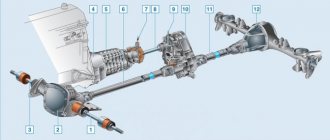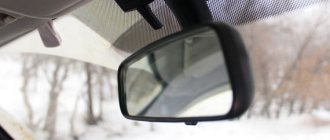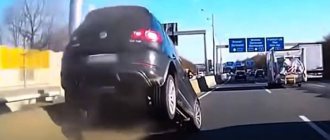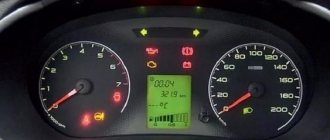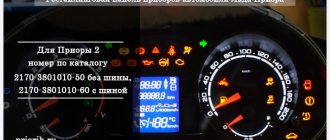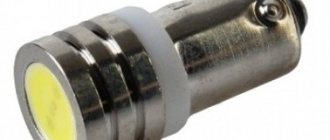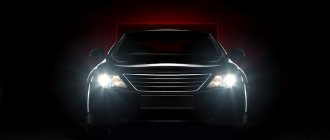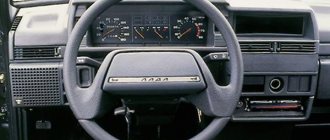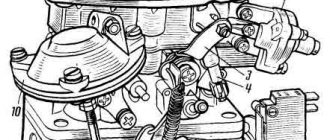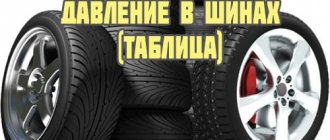Good afternoon, dear reader.
This article will review the rules of the road that apply to the use of vehicle headlights and lights in various driving situations.
Lighting devices are designed both to illuminate the road ahead of the car (to avoid collision with an obstacle) and to indicate the car itself (to avoid collision with other vehicles).
Unfortunately, many drivers do not know the rules for using headlights and flashlights, and therefore do not use all the opportunities provided to them.
- in good visibility;
- at night on an unlit road;
External car lights
At the beginning of this article, a few words about what external lighting devices a car may have. This information is primarily intended for those who are studying at a driving school and do not yet understand what these or other headlights or lanterns are intended for.
Note. The topic “lighting devices” is one of the most difficult in a driving school, because... It is difficult for a driver candidate who has never driven before to remember the similar names of light devices and the rules for their use.
parking lights
Dimensions are small light devices located approximately at the corners of the car (4 pieces in total). They do not shine very brightly and are primarily designed so that drivers of other cars can understand in the dark where your car begins and ends.
As a rule, the car is designed in such a way that when you turn on the low or high beam headlights, the dimensions turn on automatically. That is, low beam without side lights does not work.
Daytime Running Lights
DRLs are light devices in the front of the car (2 pieces), which shine quite brightly. They are designed to improve visibility of the car from the front during daylight hours.
Daytime running lights should not be used at night because... at night, they can blind oncoming drivers due to their high brightness. However, they do not illuminate the road.
In 2022, most cars are equipped with daytime running lights, but such lights are quite rare on cars manufactured before 2010.
Low and high beam headlights
Low beam (2 bulbs) and high beam (2 bulbs) headlights are the main lighting devices that are designed to illuminate the road in front of the car.
In this case, the low beam illuminates the area directly in front of the car, and the high beam illuminates a more distant area. It makes sense to use low beam at low speeds, high beam at higher speeds.
Fog lights
PTF - 2 headlights in the front bumper of a car, designed to illuminate the road in poor visibility conditions.
Fog lights are optional for 2022, so not all vehicle trim levels have them. That is, the car may not have PTF.
Fog light
Fog light - a red light at the rear of the vehicle, designed to improve visibility of the vehicle in poor visibility conditions. This light device is very bright and in good weather it can blind drivers of cars behind.
This lamp is required to be installed on all cars.
Penalty for LEDs
Progress does not stand still, and after xenon bulbs even more modern LEDs appeared. Such headlights are installed on luxury cars by the manufacturer, but some drivers decided to install LEDs on their cars themselves. We are talking about a situation where the headlights are designed for halogen lamps, and the motorist changes them to LED ones with the same base.
At first, such a violation was interpreted under Art. 12.5 of the Administrative Code, part 3, for which drivers were threatened with deprivation of their licenses from 6 to 12 months. However, in 2022, a Supreme Court ruling was issued, which clarified that the penalty of deprivation of rights can only be imposed if the color and operating mode of the lighting devices are changed. When installing LEDs, the color of the lights remains the same, which means that such a violation must be qualified under Art. 12.5 of the Code of Administrative Offences, part 1, according to which the driver only faces a car fine in the amount of 500 rubles.
Since the type of lamp does not match the type of reflector, it is impossible to legalize a change in design, and therefore a fine will be imposed until the motorist installs ordinary halogen lamps in place.
Driving during daylight hours
In good visibility
When driving during daylight hours, the vehicle must have one of the following lights on:
- low beam;
- Daytime Running Lights;
- fog lights;
If the car has all the listed devices, then it makes sense to use DRL. These lights are brighter and use less electricity.
When driving, the following can also be turned on:
- parking lights.
It is prohibited to use:
- fog lamp.
In case of insufficient visibility
One of the following lighting fixtures must be used:
- low beam headlights;
- high beam headlights.
In this case, the main beam cannot be used:
- in populated areas on illuminated roads;
- when oncoming vehicles pass;
- when blinding drivers of passing or oncoming cars.
Additionally, the car may include:
- fog lights;
- fog lamp;
- parking lights;
- Daytime Running Lights.
Note. The rear fog light is specifically designed for use in conditions of poor visibility, but in practice no more than 10 percent of drivers use it. The rest, apparently, do not know the relevant rules.
Traffic rules and fog lights - the main subtlety
First, let’s clarify the main point regarding the requirements of the Road Traffic Rules for the use of PTF.
The fact is that the Rules do not prohibit or oblige the inclusion of fog lights in 2022 at all. Traffic regulations only indicate in what cases these lights can be used. And they do not directly prohibit their inclusion in other, not listed cases. This leads to a twofold situation when traffic police officers or courts considering the case can interpret these cases as a ban on using PTF. However, we have what we have - if the Rules indicate the possibility of their use, but do not prescribe when it is prohibited, it means that in other situations it is not prohibited. However, keep in mind that in practice you may encounter such an interpretation by traffic police officers, when traffic rules allegedly prohibit something that is not expressly permitted.
In order to better understand what we are talking about, let's consider, in fact, all such cases when traffic regulations allow the use of fog lights. And also how exactly it is spelled out in them.
Driving in the dark
One of the following lighting fixtures must be used:
- low beam headlights;
- high beam headlights.
In this case, the main beam cannot be used:
- in populated areas on illuminated roads;
- when oncoming vehicles pass;
- when blinding drivers of passing or oncoming cars.
Additionally you can use:
- fog lights;
- fog lamp (only in case of poor visibility);
- parking lights.
Fine for turning off low beam headlights
For driving without headlights on, inspectors fine drivers 500 rubles (Article 12.20 of the Administrative Code). This amount can be reduced exactly by half by paying a car fine with a 50% discount in the first 20 days after the decision is made.
Important! You can find and pay car fines through the PaymentGIBDD.rf . To search for fines, enter your driver's license or vehicle registration number and vehicle registration number.
In the future, it is planned that fines for low-beam headlights will be issued not only by traffic inspectors, but also by automatic recording cameras. The traffic police promises to check each photo manually to avoid erroneously issued orders.
Stopping and parking a car
At night on an unlit road
Must be included:
- parking lights.
It is prohibited to use:
- fog lamp.
Other lighting devices can be used.
In case of insufficient visibility (during dark or daylight)
Must be included:
- parking lights.
Other lights, including the rear fog lamp, may be used.
The amount of the fine for a non-working headlight
According to the rules, before leaving, the motorist must check whether the headlights are in working order. If the lights do not work, you should not drive your car at night or in poor visibility conditions.
Important! Previously, the traffic rules stated that it is possible to drive with one left-hand headlight, but in the updated version of the document there is no such clarification, which means that in the dark it is unlikely to be able to avoid punishment for a non-working headlight.
The fine for a non-working headlight is the same 500 rubles. If an inspector stops you for unlit or dirty headlights, try to negotiate and fix the problem on the spot. In this case, the state traffic inspector may limit himself to only an oral remark.
What if the fog lights are blinding?
Nothing! Alas, the traffic rules clearly indicate that the lights should be turned off only for driving lights. If you blind someone with fog lights, then you do not have a direct obligation to turn them off if they give you a signal from emergency lights (and this is the only way to signal blinding according to traffic rules).
On the other hand, there is a direct dependence pattern: if your PTFs are blinding, then something is wrong with them. And most often this something wrong is expressed in the installation of a light source that is prohibited for this type of lighting device. And this is a violation that can lead to serious consequences. We'll talk about this a little more below.
Can I install a headlight from another car?
If you don’t have a headlight at all after an accident or it’s faulty, then using another car is possible, but only in 2 cases:
- another headlight from the same model as your car, including having the same markings and designed for the same light source (halogen, xenon, for example),
- your car is no longer in production, but then the headlight from another car should also match the type of lamps used in your stock one.
If everything is very clear with the first option, then the second is permitted by paragraph 3.1 of the List of Faults as an exception.
If your car model is still in production (namely a model, not a generation or modification), then installing another headlight will be a change in the design, which is prohibited by the Rules. In particular, paragraph 7.18 indicates that operation is prohibited if changes are made to the design. And paragraph 6 of the Technical Regulations of the Customs Union says what changes to the design are.
For this you can receive not only a fine, but also the cancellation of your car registration.
Hazard lights: what they are for and when to turn them on
The so-called “emergency light” is also a combination of the operation of several lighting devices, and therefore belongs to the section in the traffic regulations that regulates the use of various modes of operation of car headlights. What should you consider when activating the emergency alarm mode?
The very first thing is, of course, emergency situations in which not only emergency lights are involved, but also an emergency stop sign. The latter must always be in your trunk, otherwise you will violate traffic rules. Regardless of where the emergency breakdown of your car occurred, in a vacant lot or on the highway, you need to protect yourself and other road users by marking your car in accordance with the traffic rules. A warning triangle is installed on the route to your car 15 or 30 meters from it, depending on the location of the breakdown.
Changing something good only spoils it
“Now the old rules continue to apply; no new amendments to the traffic rules regarding lighting devices have been adopted,” says Pyotr Shkumatov. But there is one point hidden in the traffic rules, around which the controversy began.
The fact is that the latest amendments to paragraph 19.5 of the traffic rules were approved in 2010. They have significantly tightened the rules for the use of lighting devices on vehicles. If previously passenger cars were required to drive during the day with lights only outside the city, then in the new edition of the traffic rules this has become mandatory within populated areas. Meanwhile, 8 years ago there was some relaxation. It was allowed to use daytime running lights instead of low beam headlights. The literally edited clause 19.5 of the traffic rules read: “During daylight hours, low-beam headlights or daytime running lights must be turned on on all moving vehicles for the purpose of identifying them.”
Apparently, the addition “or daytime running lights” has caused so many discrepancies and interpretations. Some drivers thought that instead of bright low beams during the day, they could limit themselves to dim headlights. What does this lead to?
Is it possible to cut a turn through a solid road and how to avoid deprivation of rights? More details
This is interesting: How much does 1 liter of gasoline 92 weigh?
Evidence of wrongdoing
According to the laws of the Russian Federation, traffic police officers must prove their case. A person is not obliged to prove his innocence (until guilt is proven, a person is considered not guilty) - Presumption of innocence, Article 1.5 of the Administrative Code .
Traffic police officers must provide visual evidence. Such evidence is photography , video recording , and witness testimony .
If there are no such materials, all unremovable doubts should be interpreted in favor of the person driving the vehicle. As practice shows, traffic police inspectors often break the law when drawing up a protocol, misleading the driver.
Read more: Sample purchase and sale agreement with spouse’s consent
It is also not uncommon for an inspector to vaguely explain the situation to witnesses and ask them to sign the protocol as a witness .
The judicial practice of the Russian Federation shows that in most cases, judges side with traffic police officers (there is no reason not to believe the inspector’s words) and do not take into account or ignore the evidence base on the part of the person driving the vehicle ( witness testimony, photography, videotaping ). complaints against the traffic police decision.
Penalties for driving with low beams off or one low beam headlight, fog light or daytime running light not working are usually imposed if the car owner is unable to correct the problem on the spot . In order not to prove to traffic police officers and magistrates that you are right, you should check the serviceability of the entire vehicle lighting system before each start of movement. If a person does not agree with the instructor’s accusations, he must write about this directly in the protocol.
What color of side lights is allowed according to traffic regulations?
If the color of the light device does not meet the standard requirements established for the type of vehicle, the traffic regulations prohibit the operation of such a vehicle.
Requirements for external lighting of vehicles are established by GOST 8769-75. The terms of the standard determine that the front dimensions must emit a white color, and the rear dimensions must emit a red color (Clause 2.5.6).
Requirements for the color of side markers are established by GOST R 41.91-99: it must be yellow.
The rules specified in paragraphs 3-Article 19
When parking or stopping, according to paragraph 3, at night, when driving along a poorly lit highway or in a situation where visibility drops to 300 m, you simply need to use red side lights. In the latter case, it is permissible to accompany the operation of the side headlights with low beam and fog lights, front or rear.
More precise rules regarding fog lights are discussed in paragraph 4 of the current rules. If you find yourself in a situation in which visibility is significantly reduced due to weather conditions, then turn on the fog lights and, along with them, low or high beams. This also applies to driving on an unlit road at night.
According to point 5, in the daytime, no matter where you are driving, in the city or on the highway, when visibility is good, the DRLs or headlights should always be on in low beam mode.
